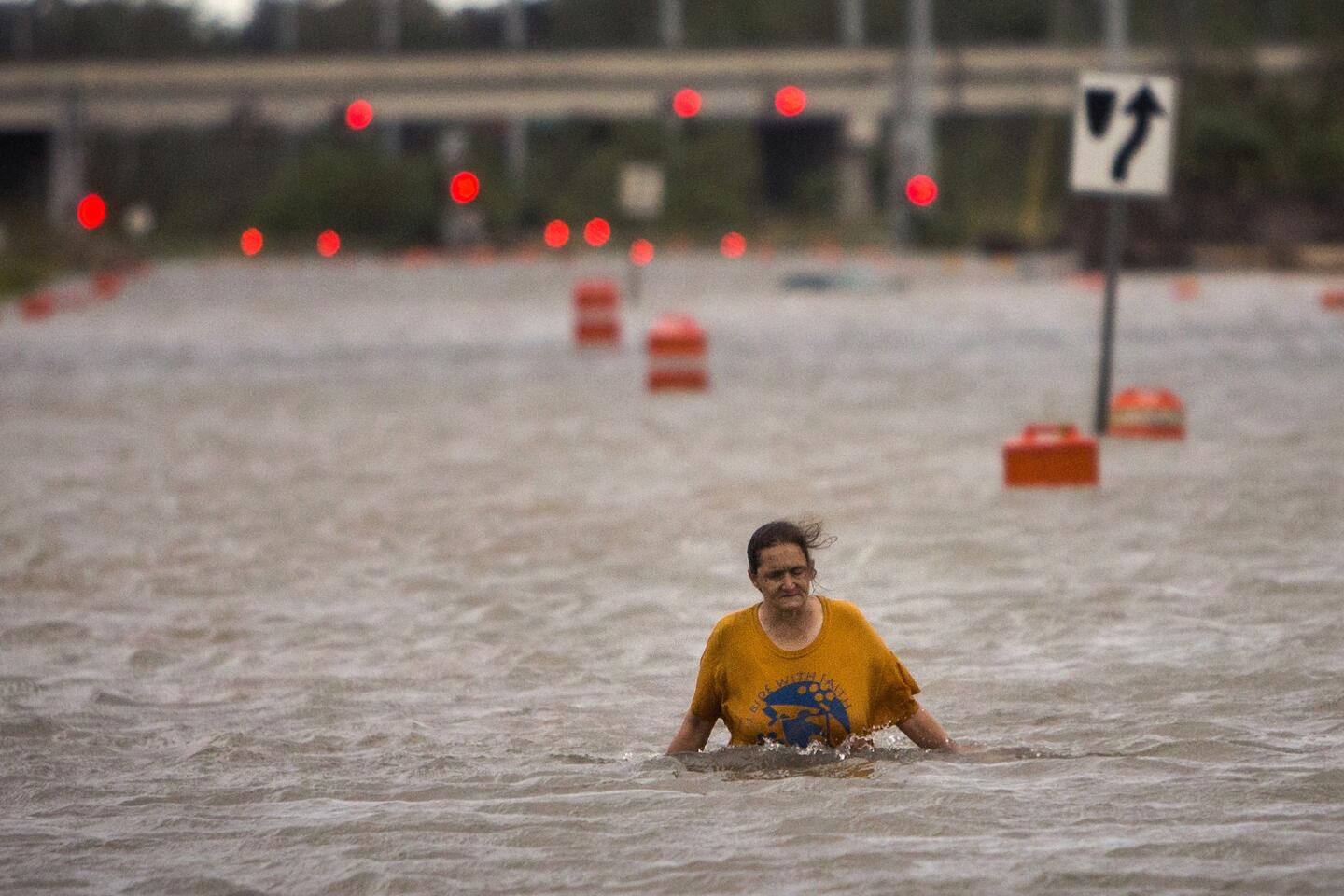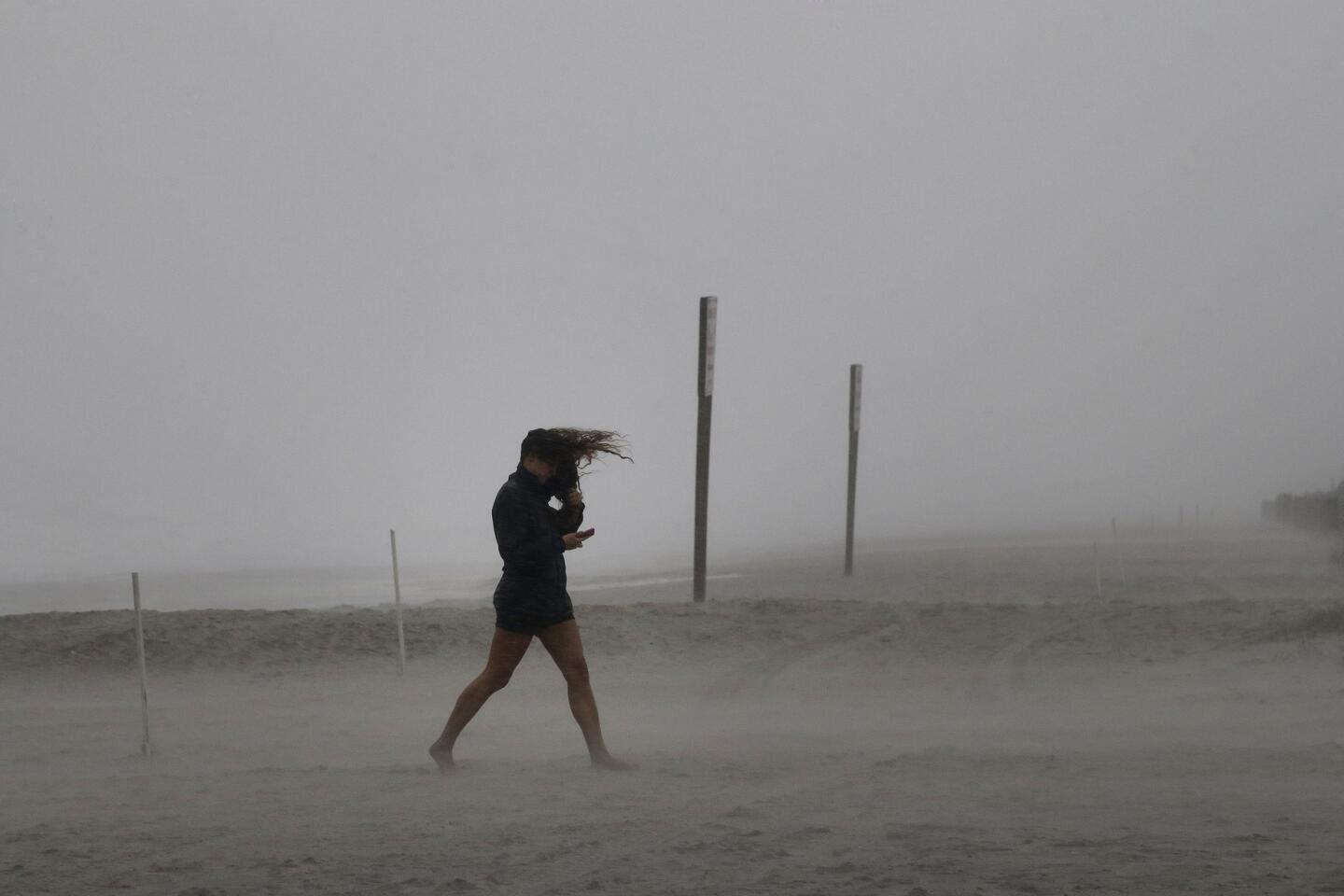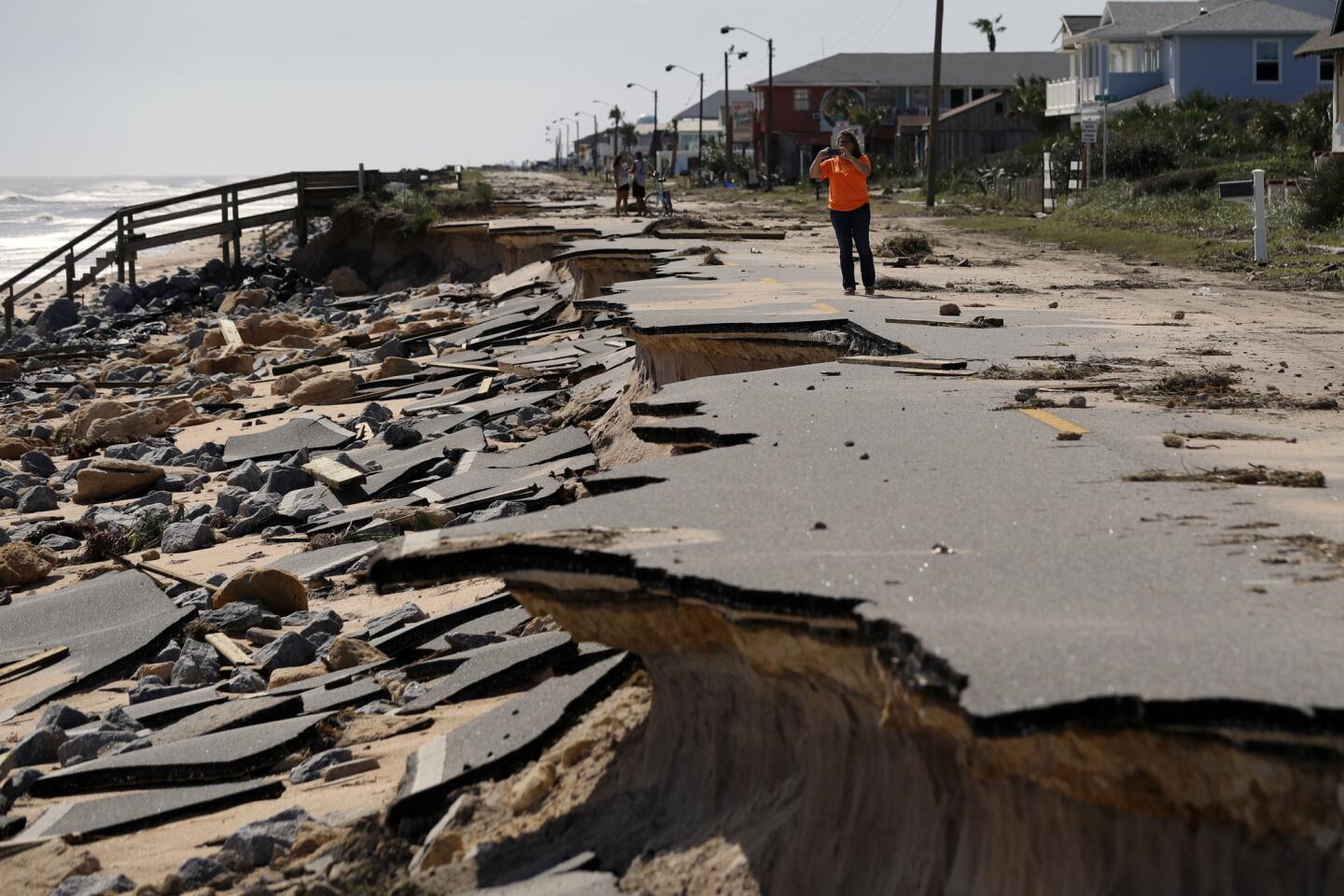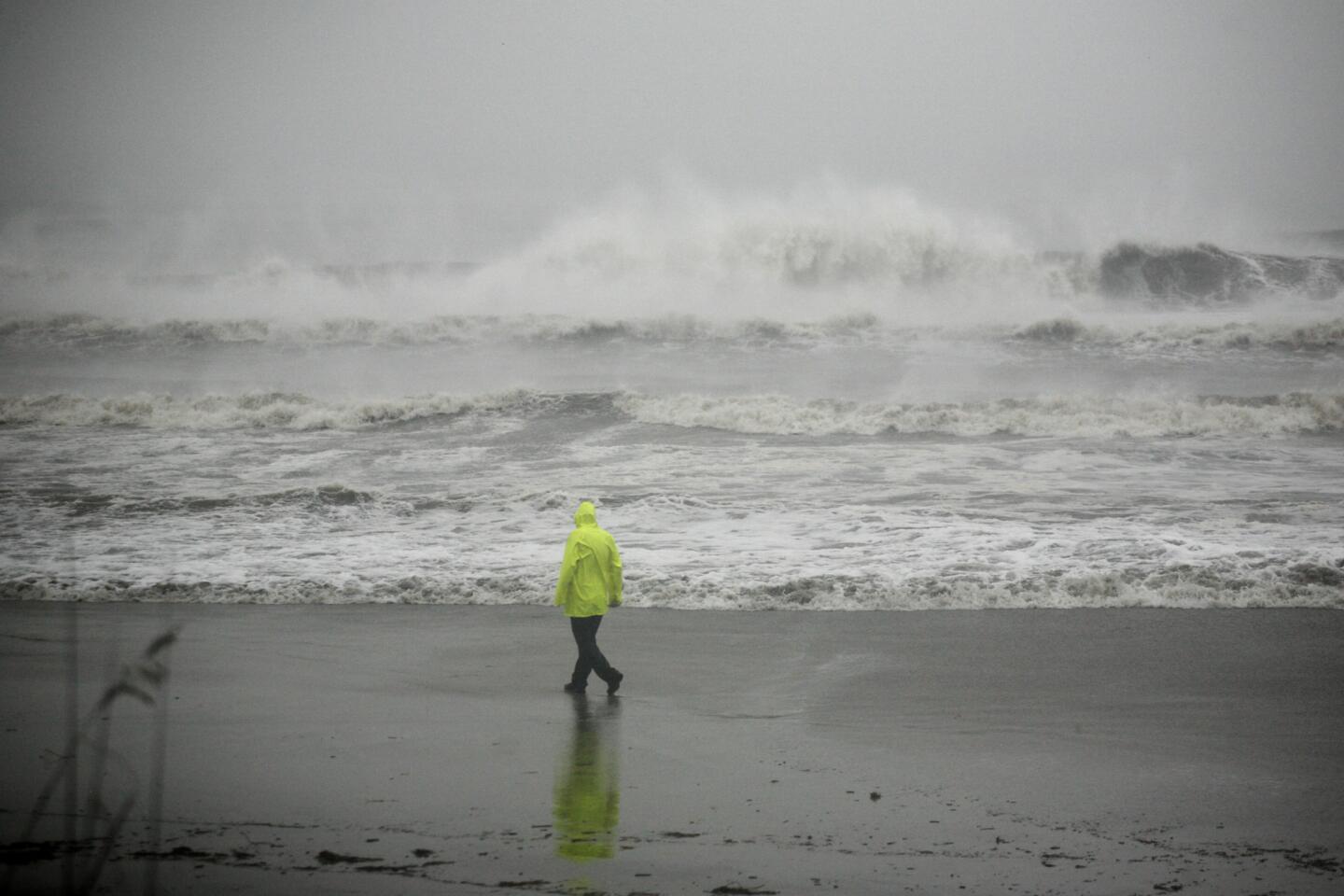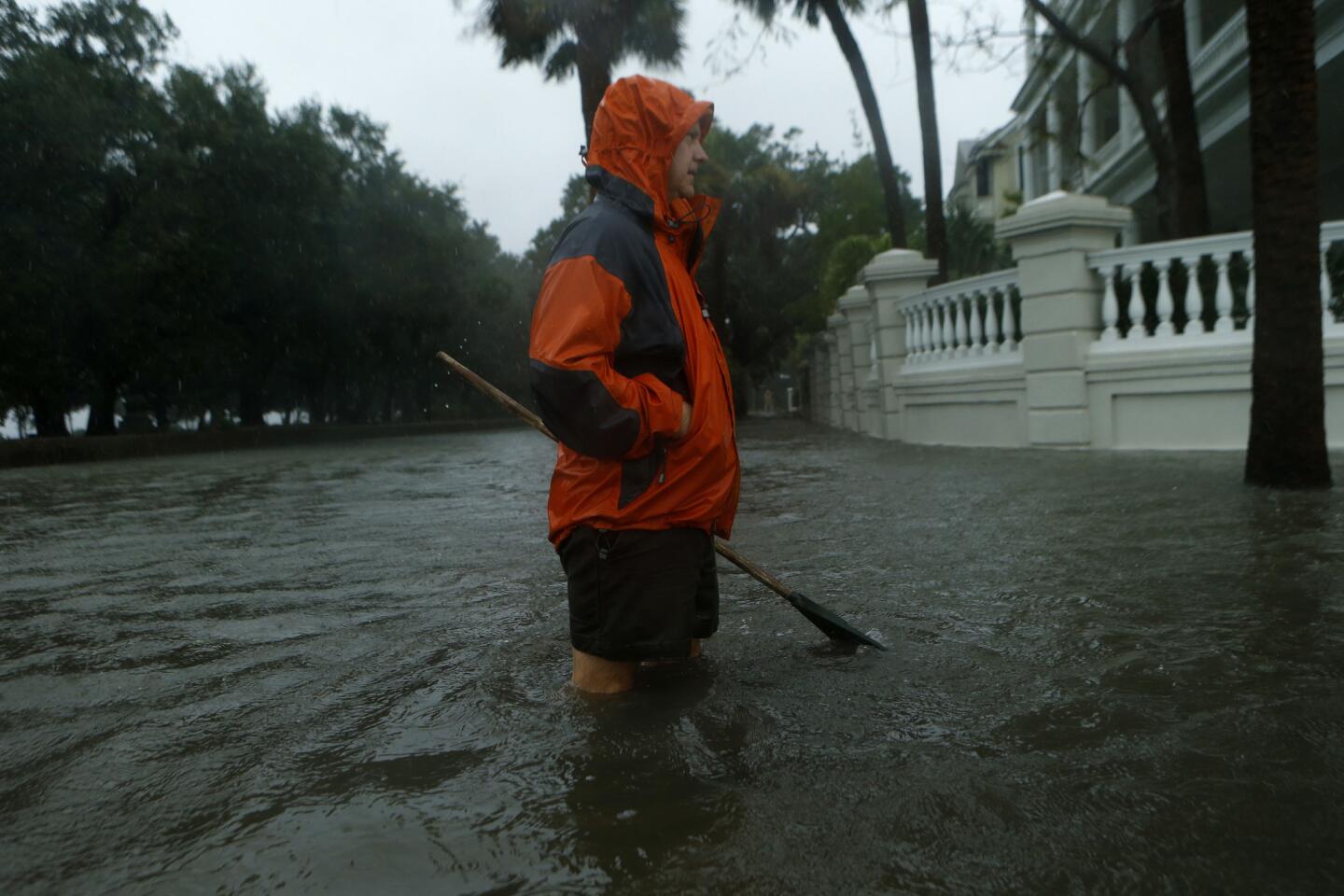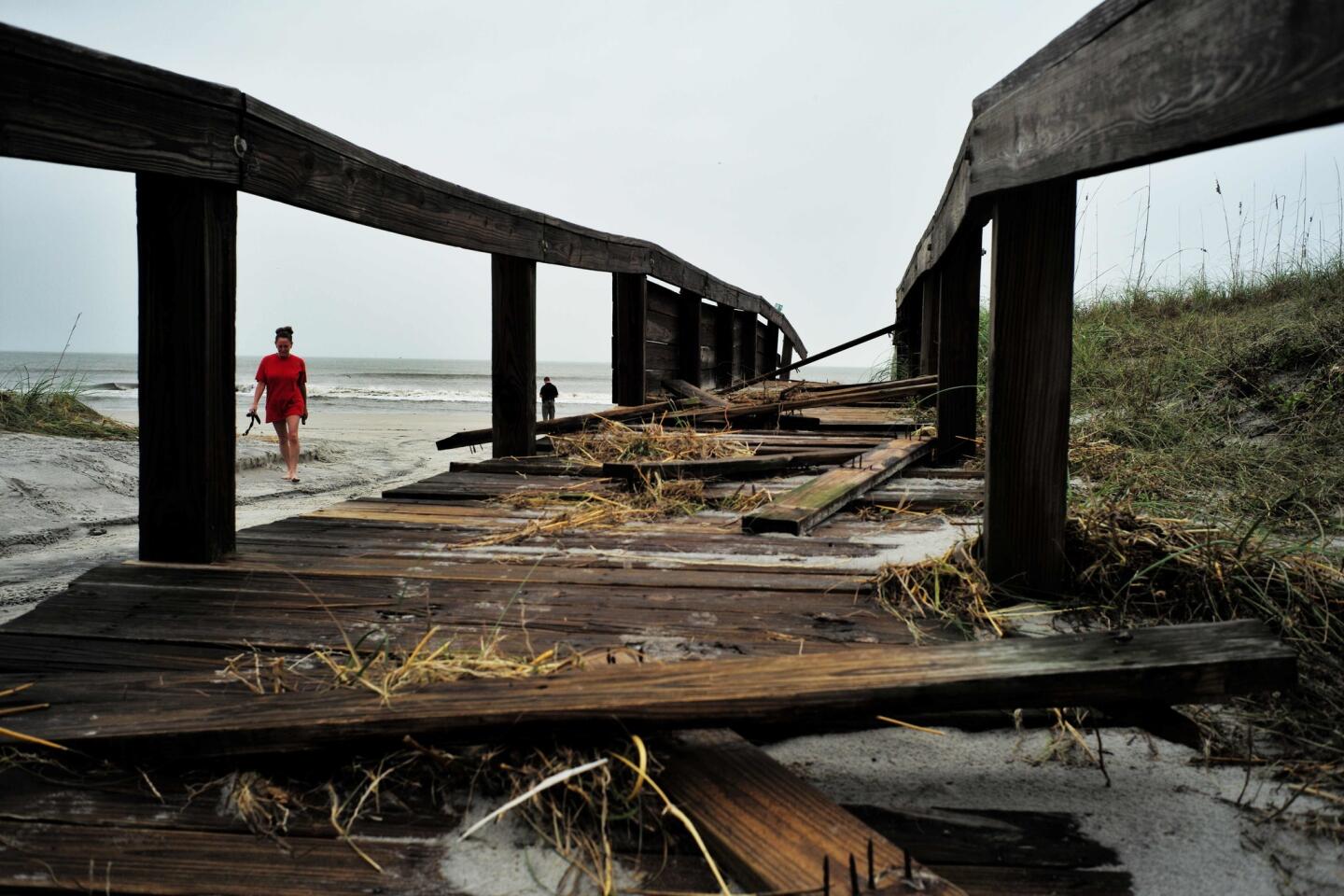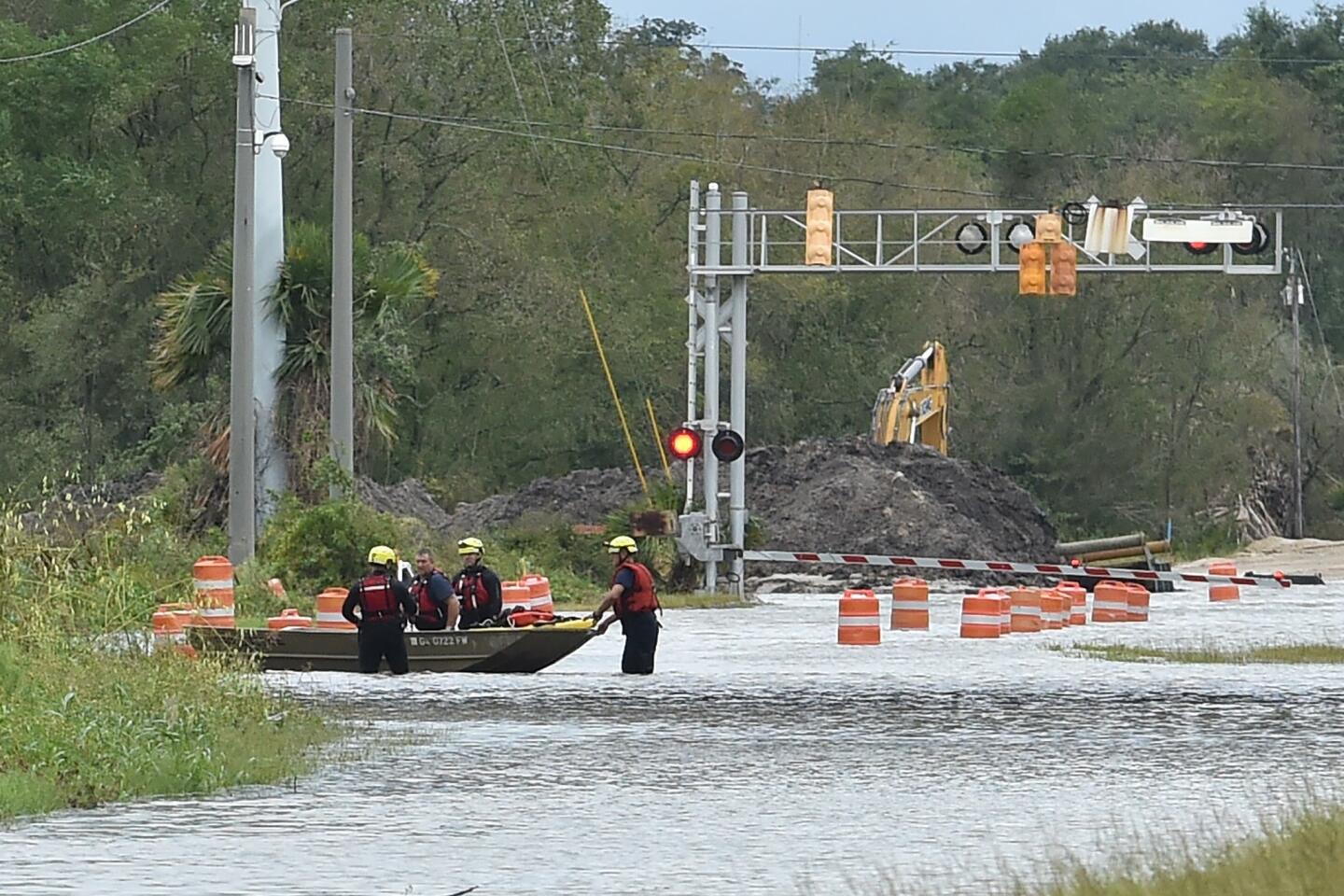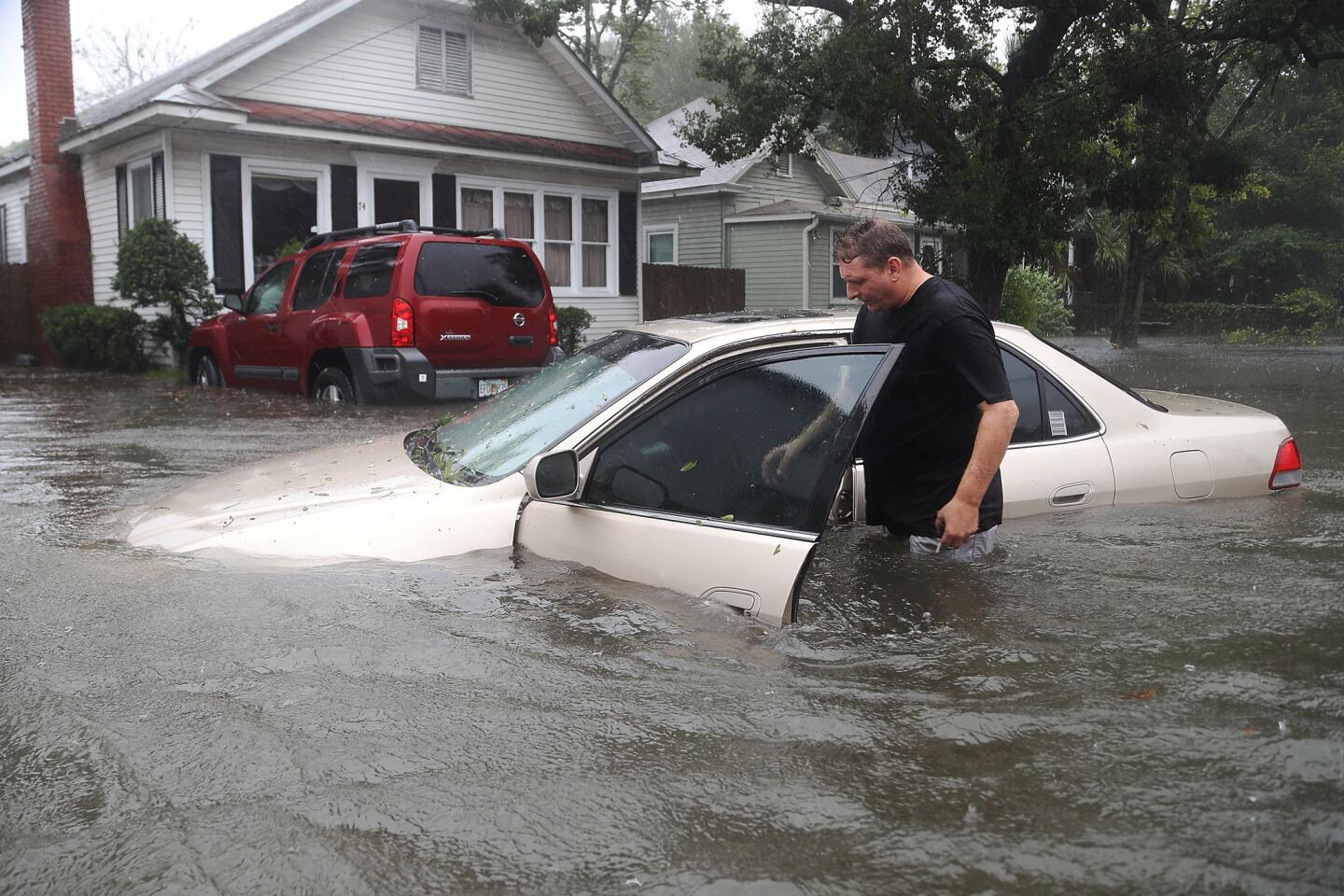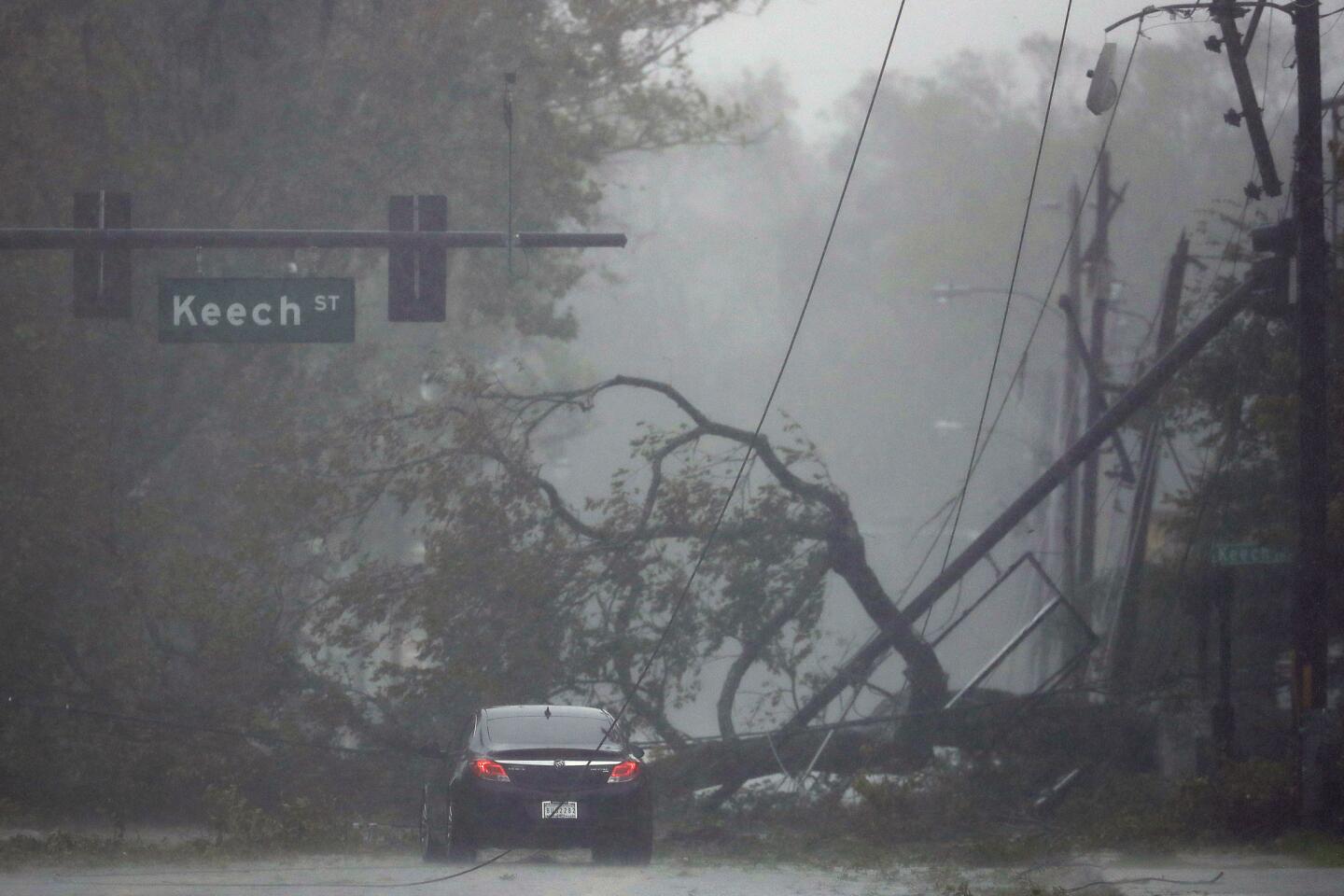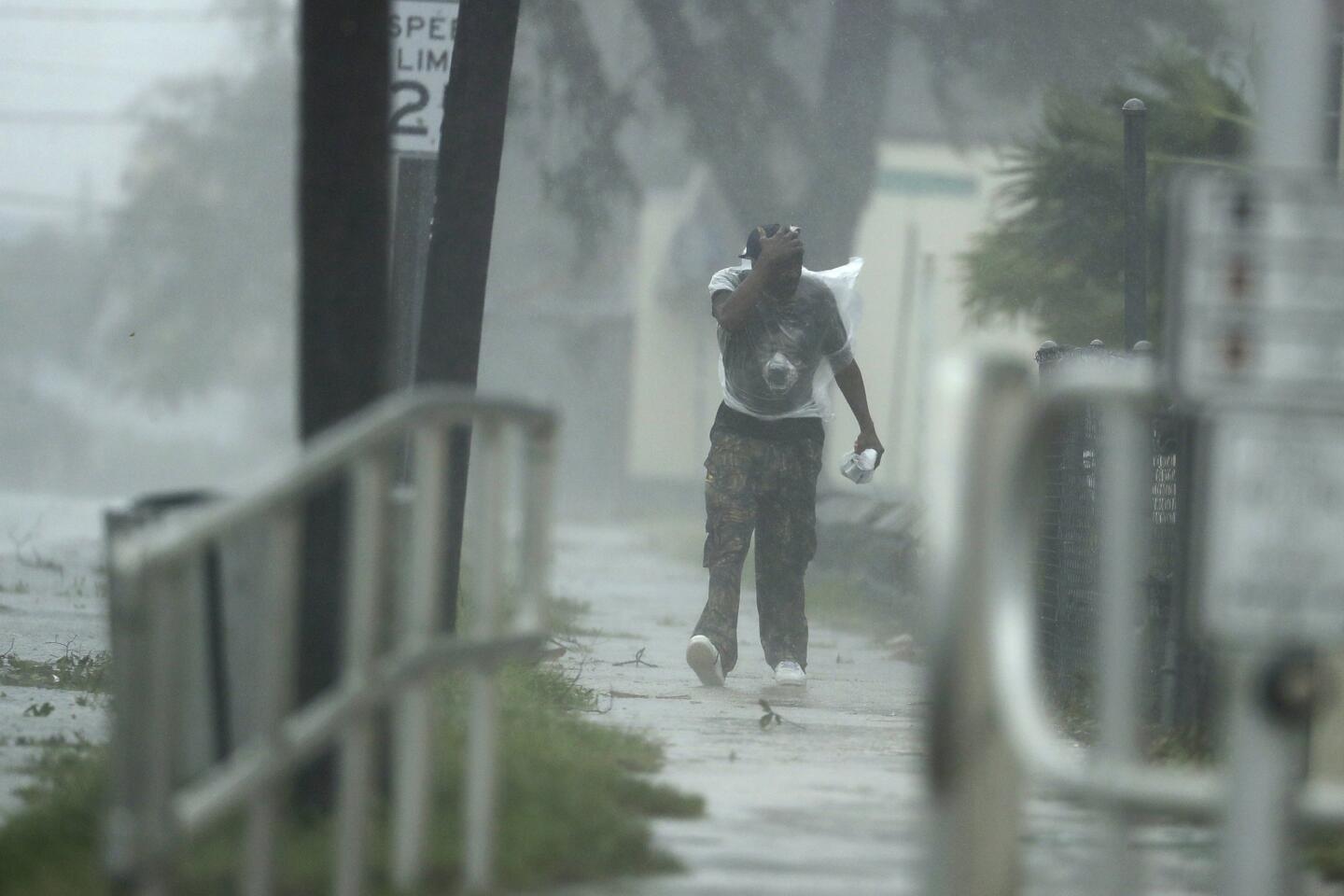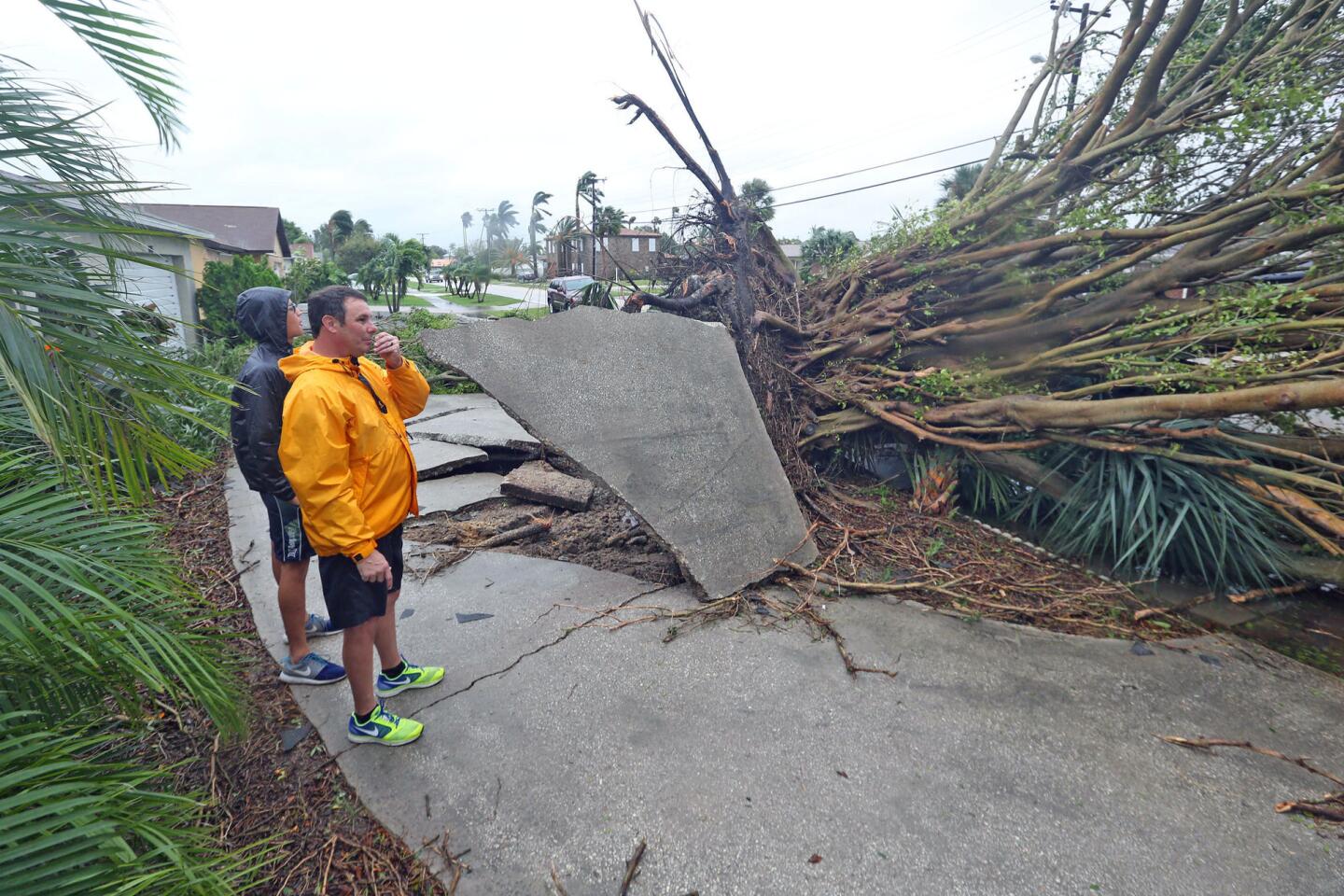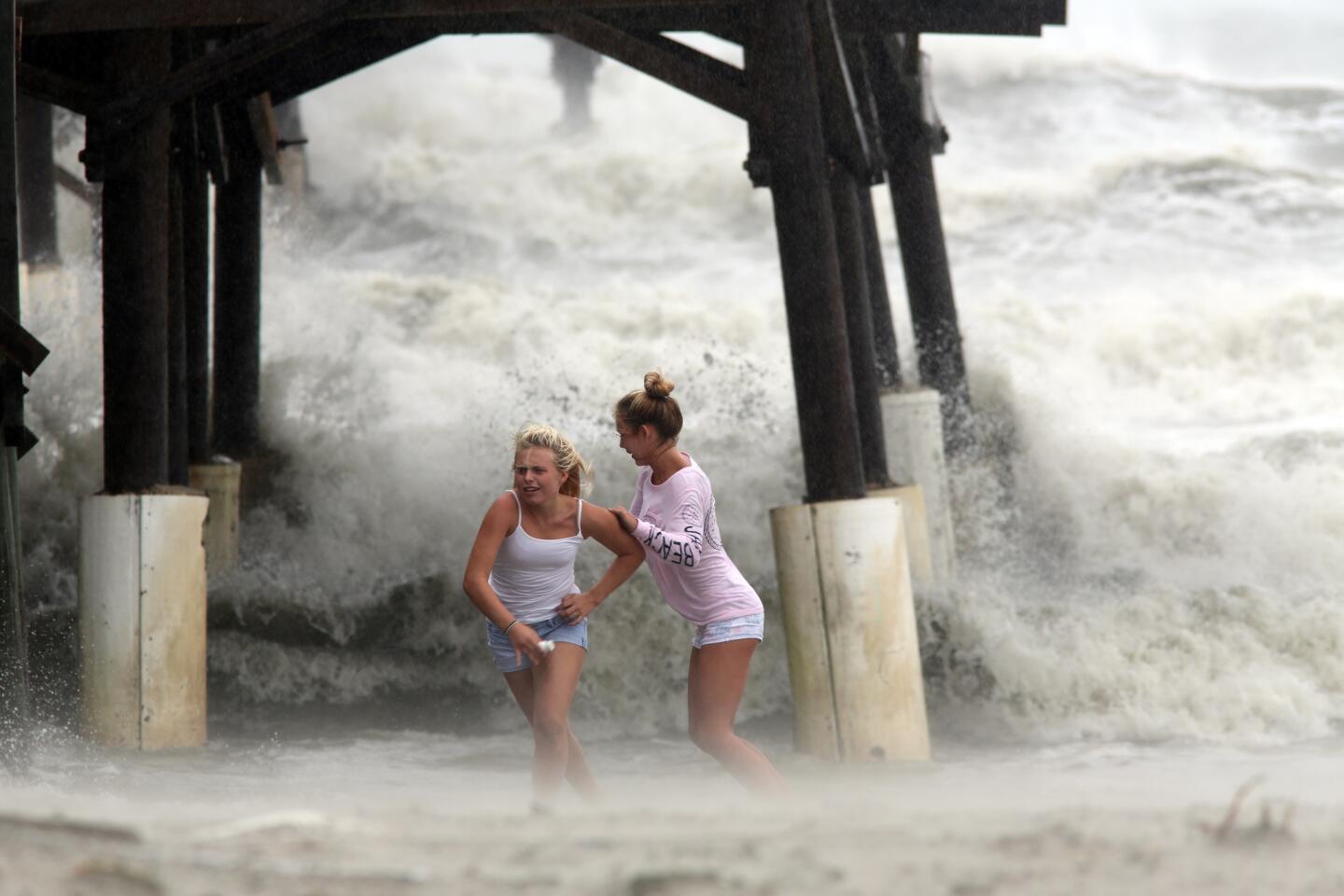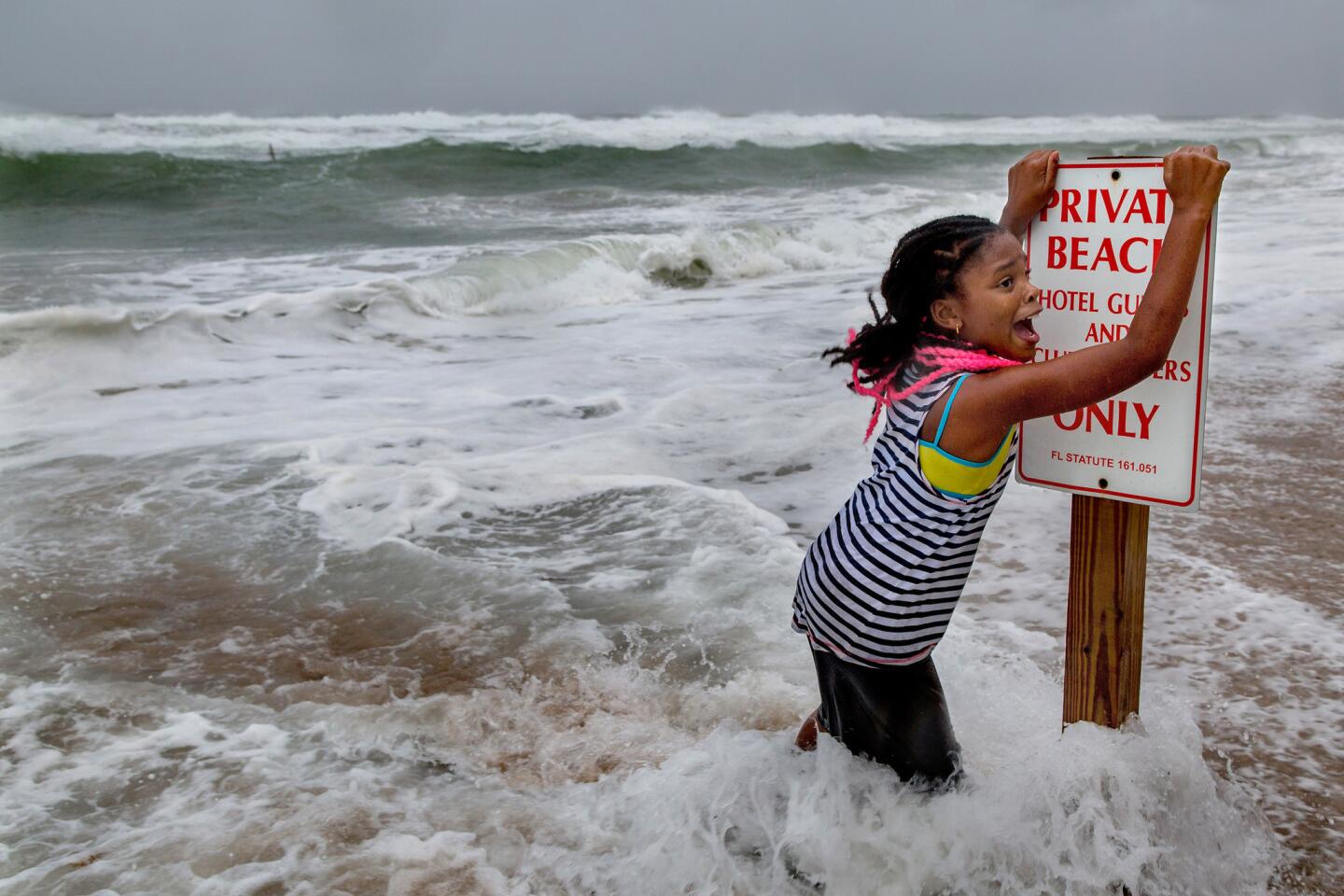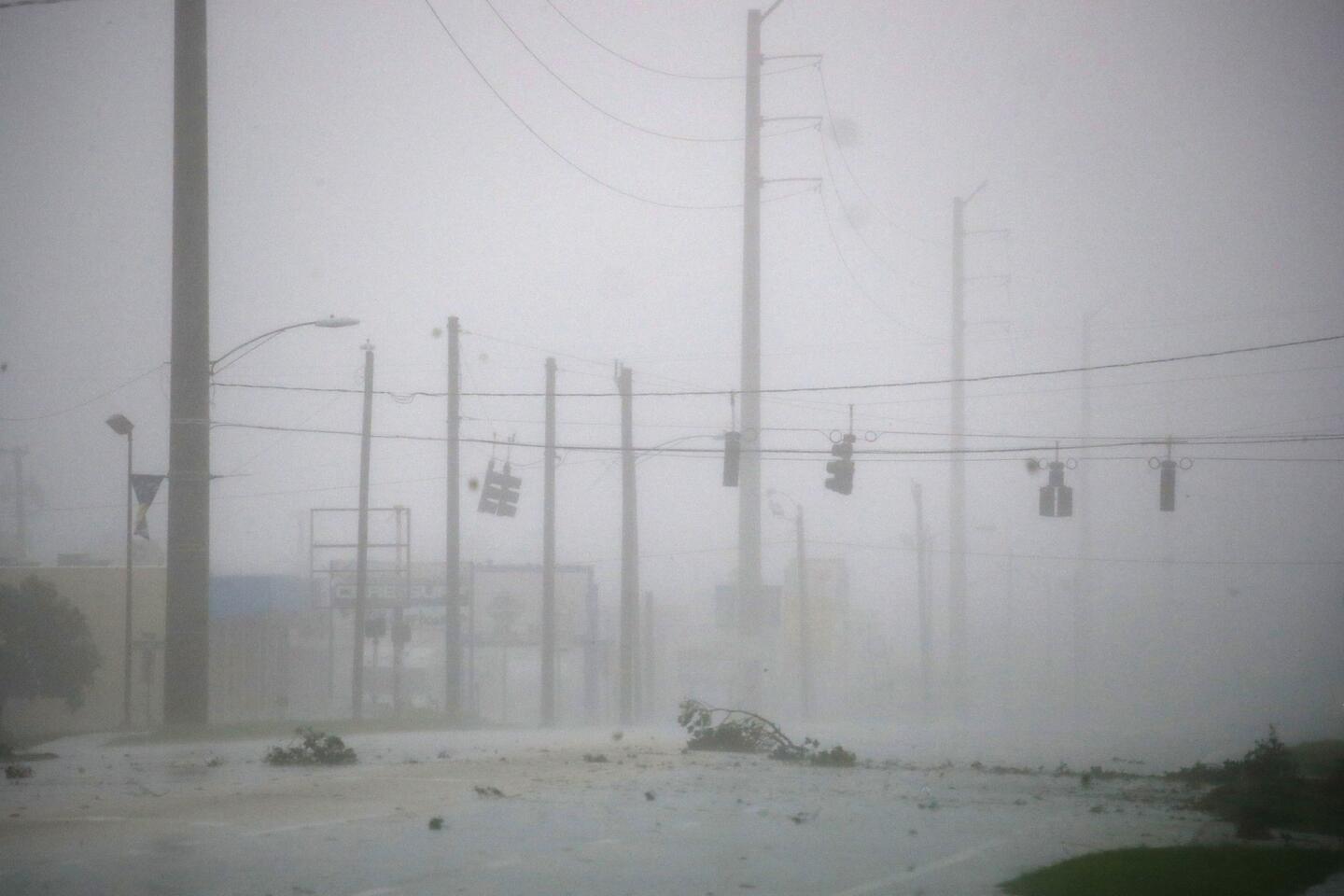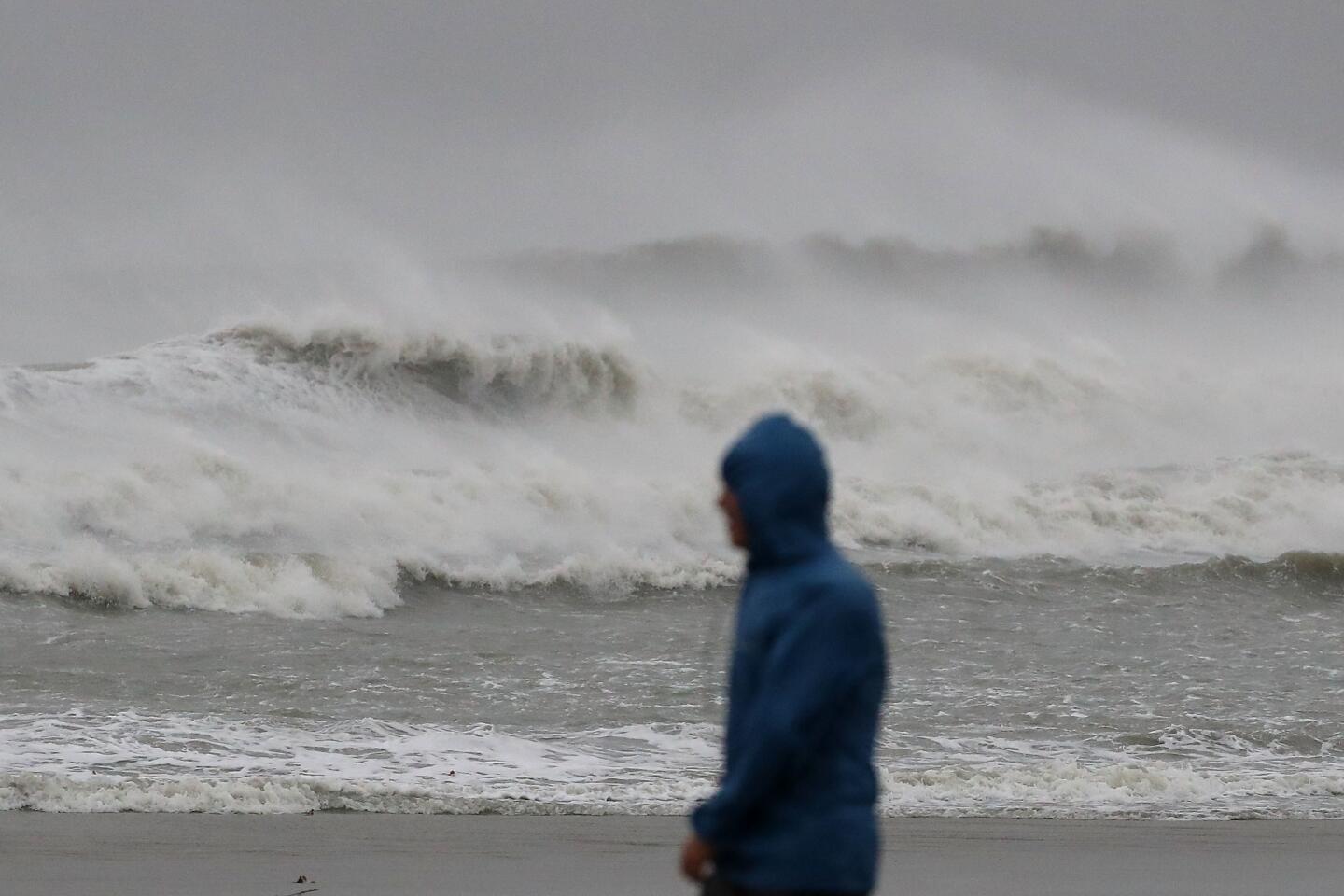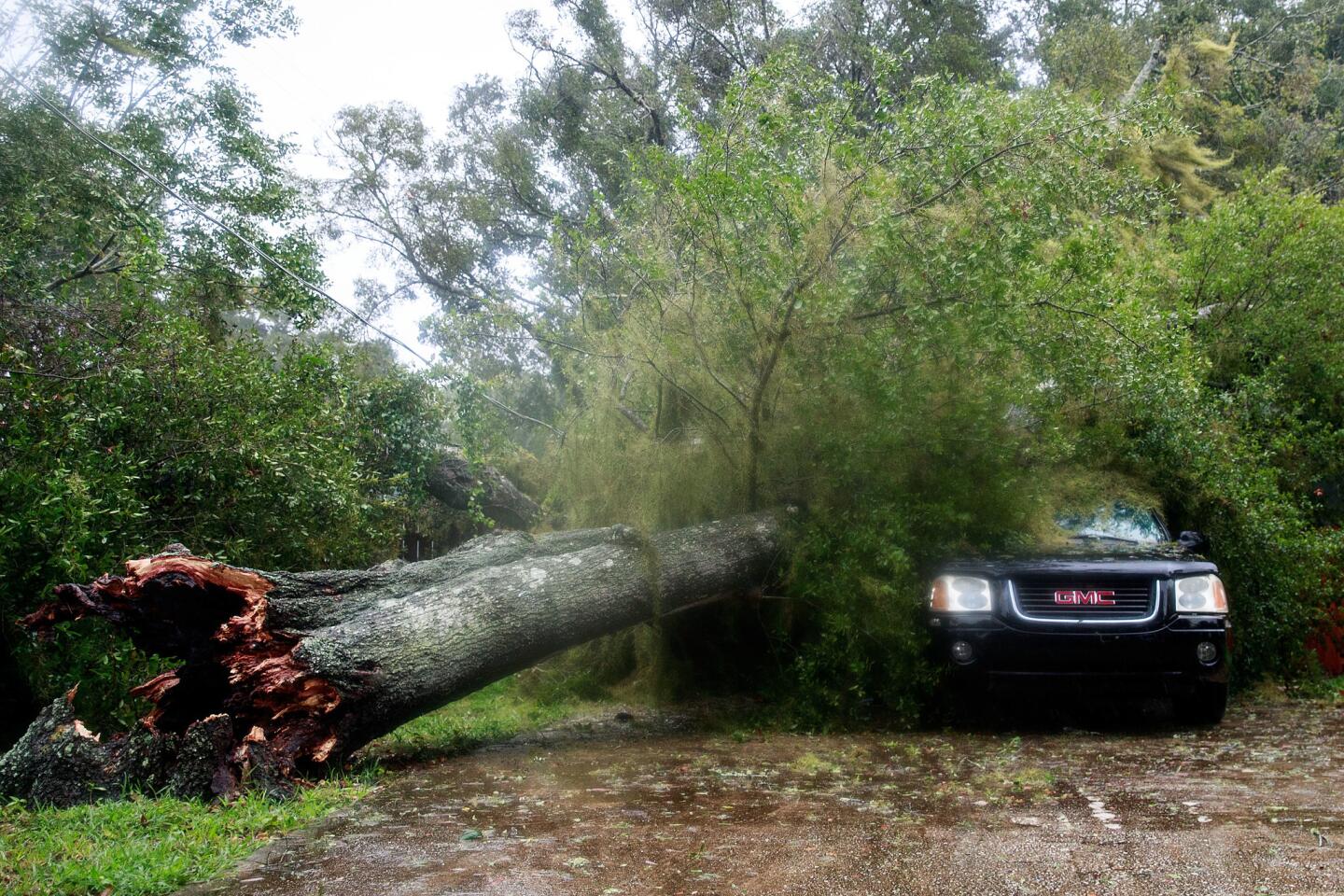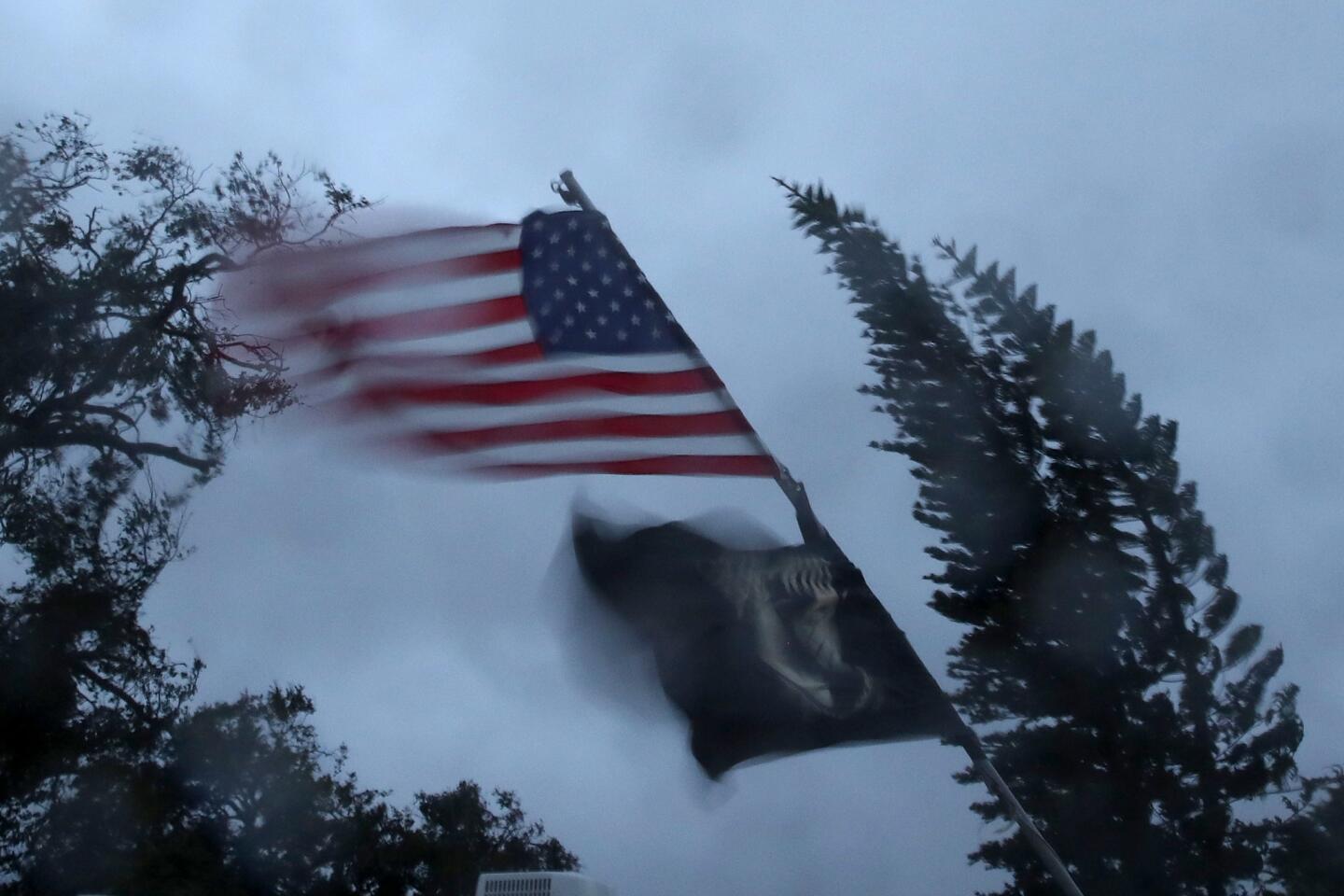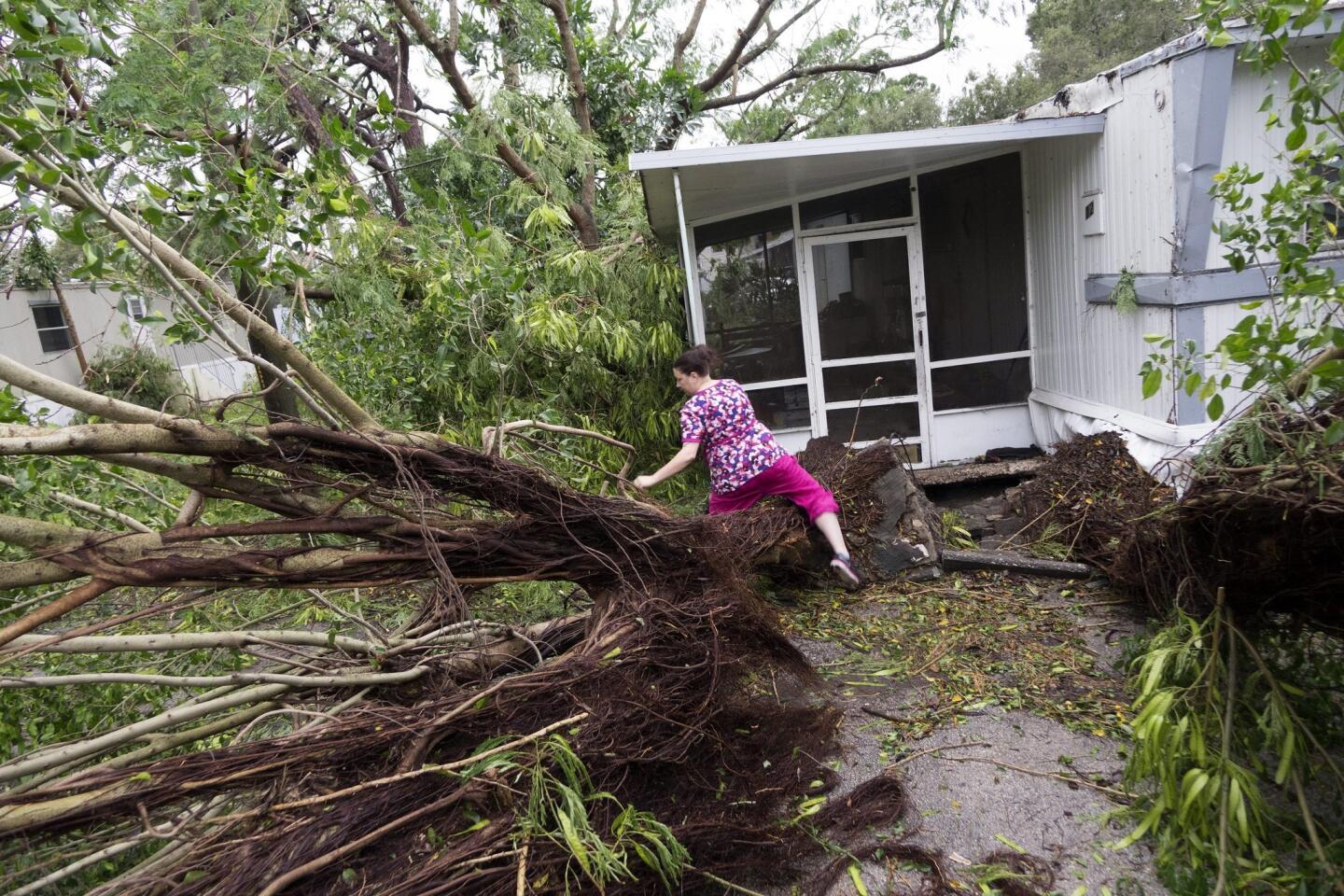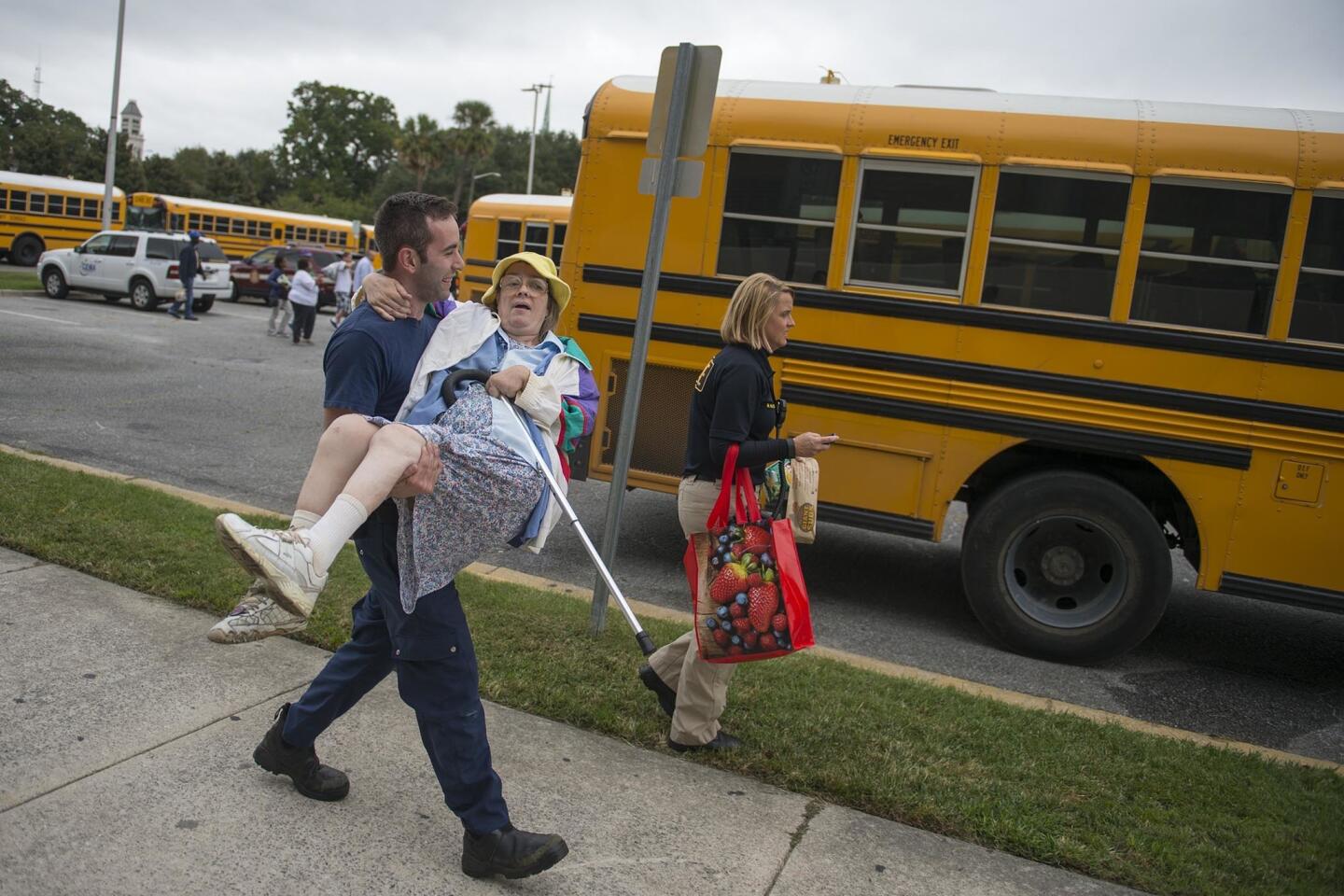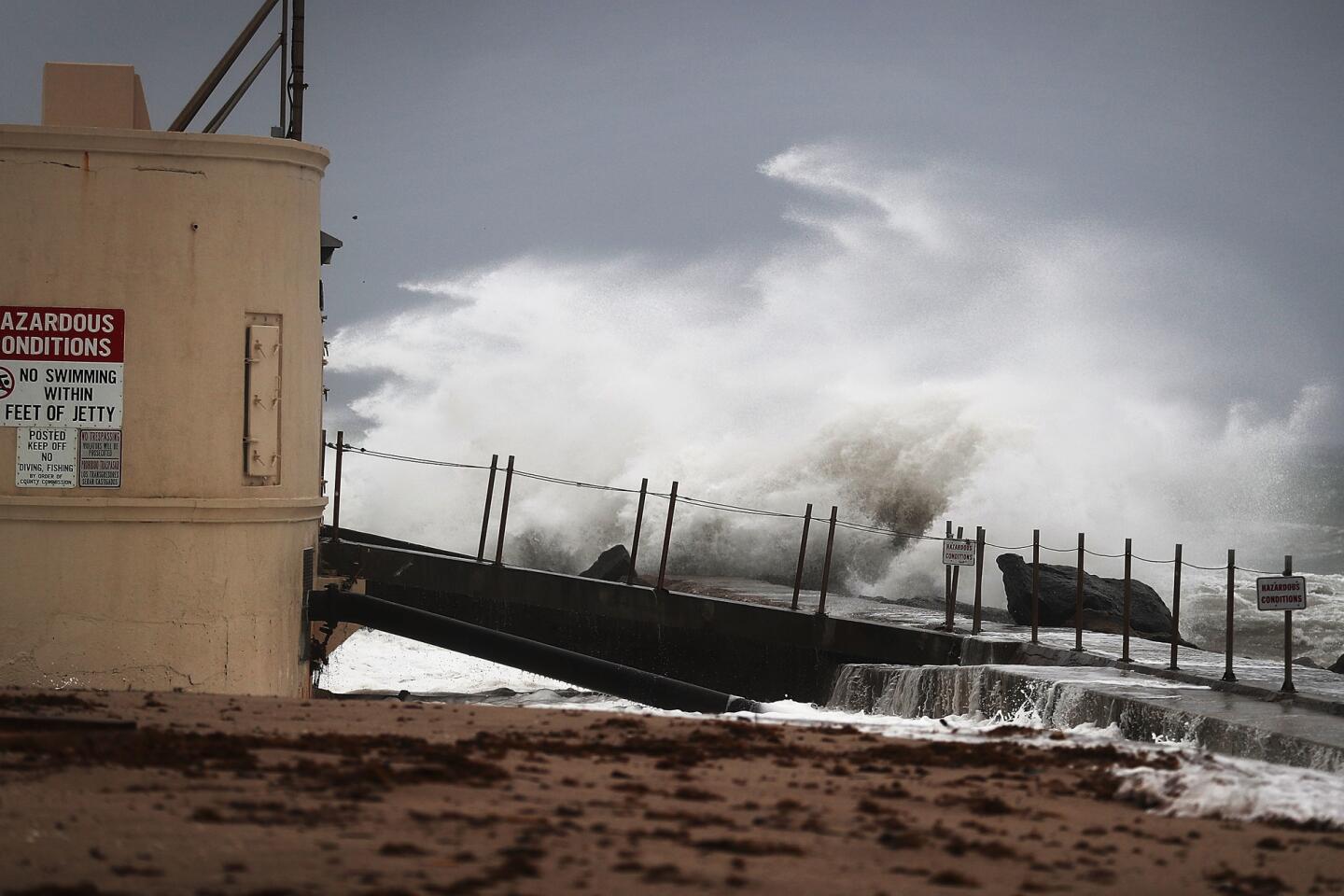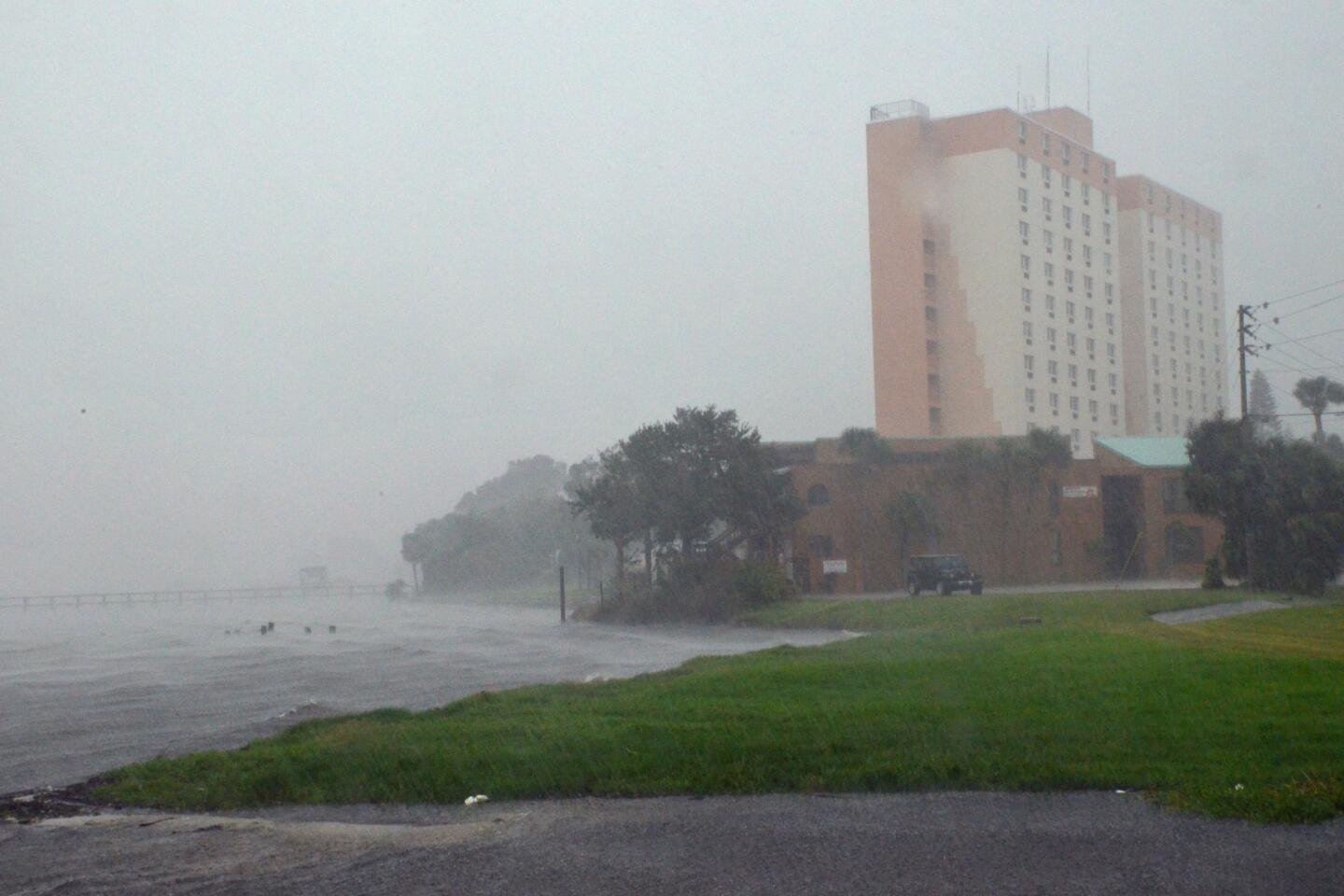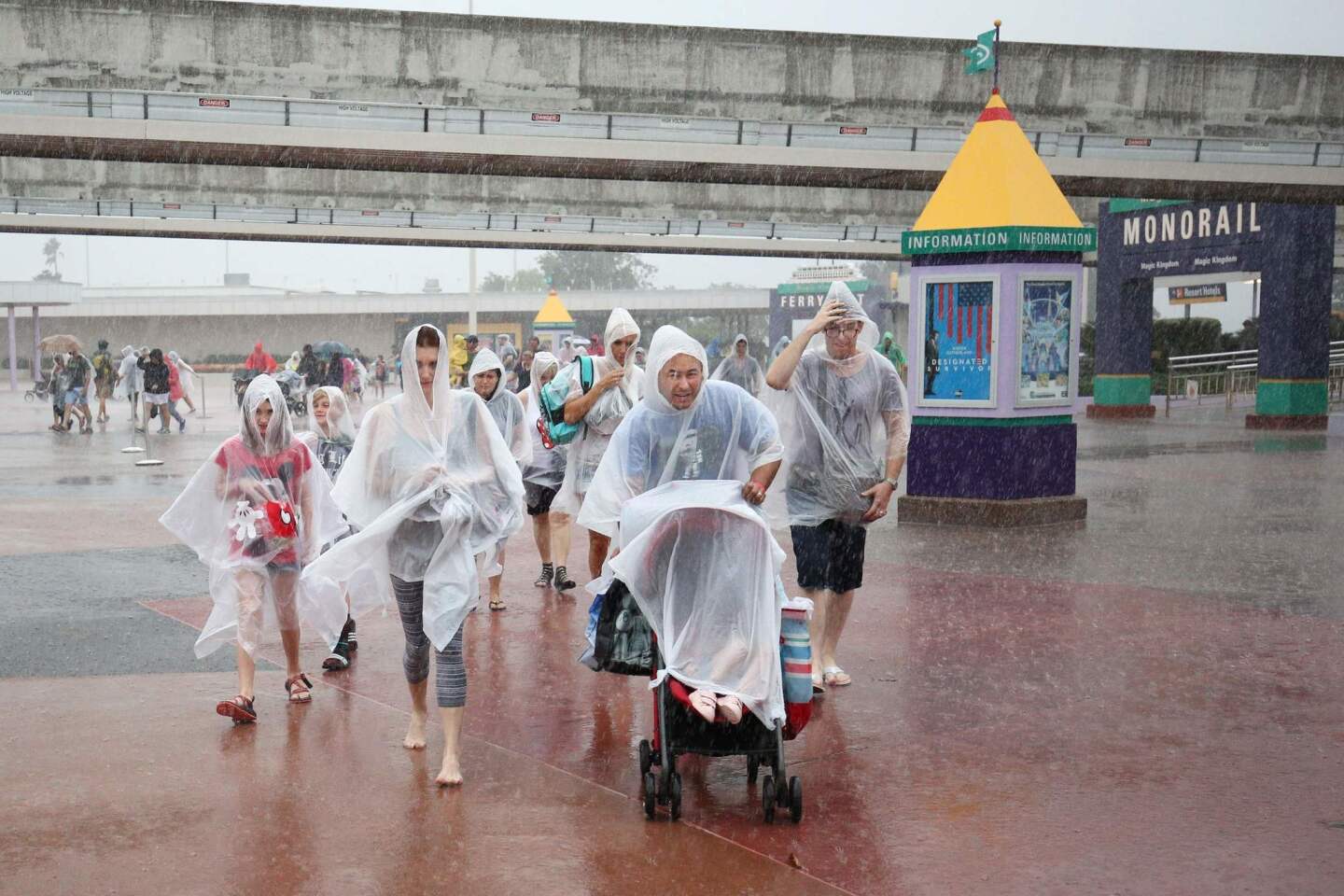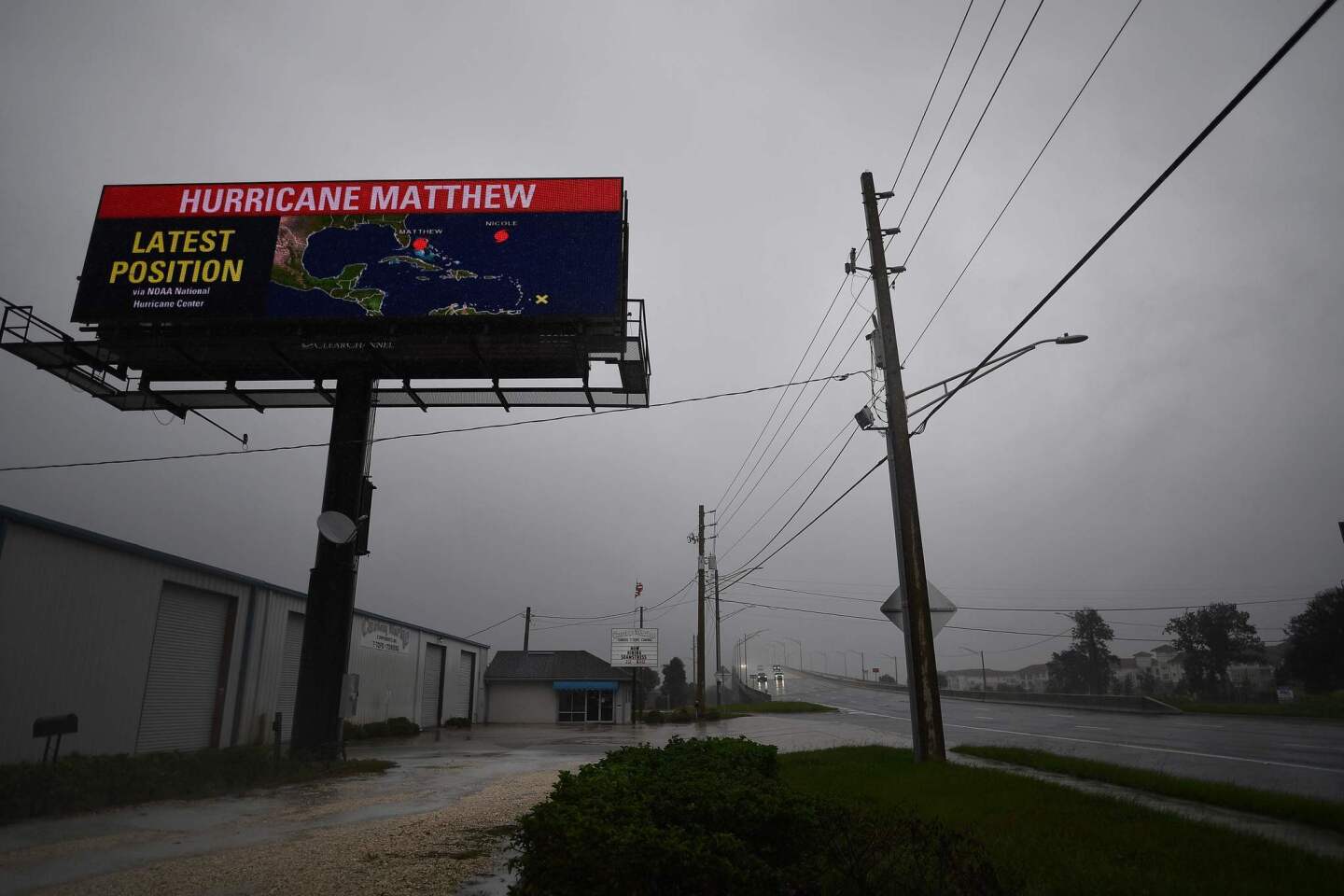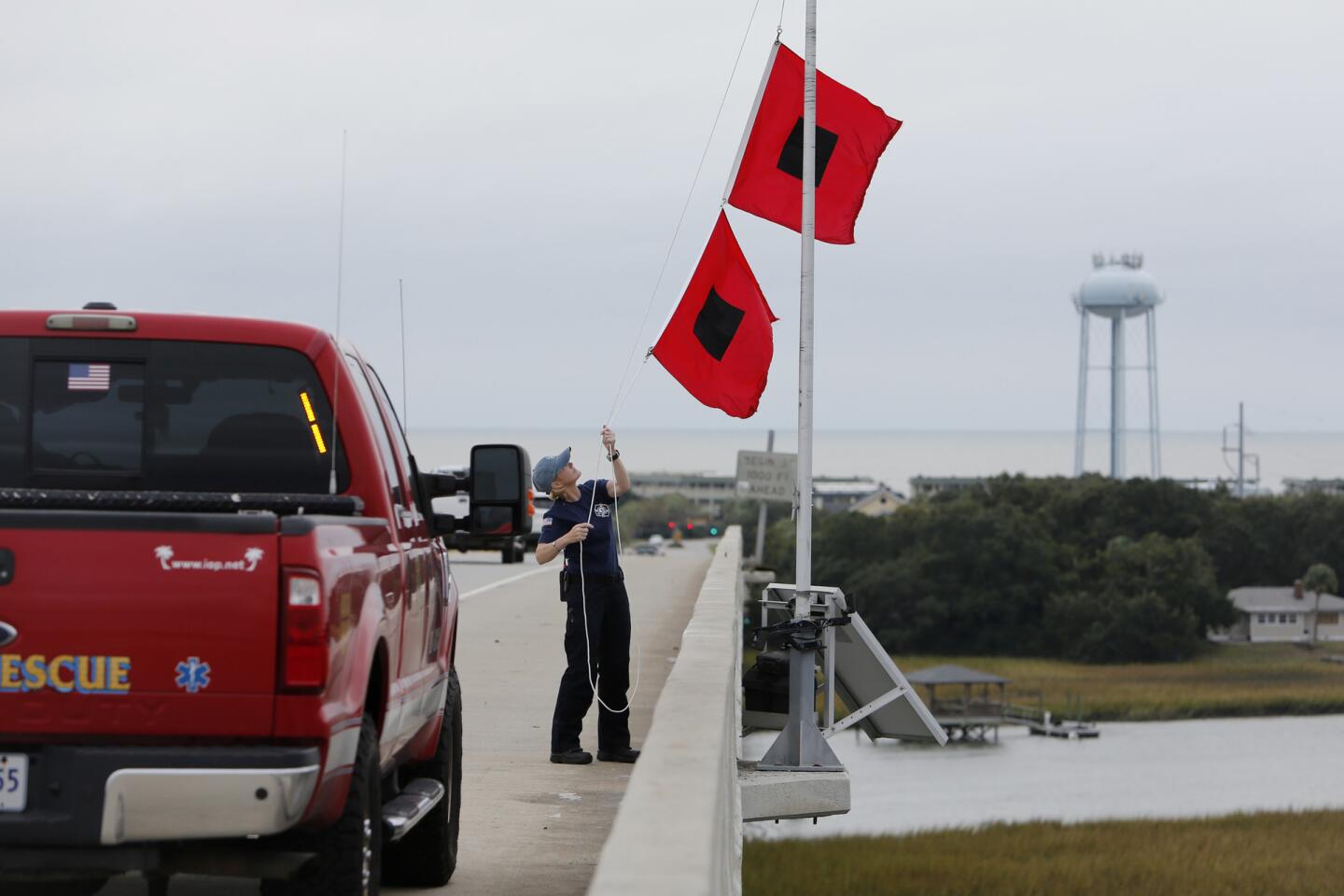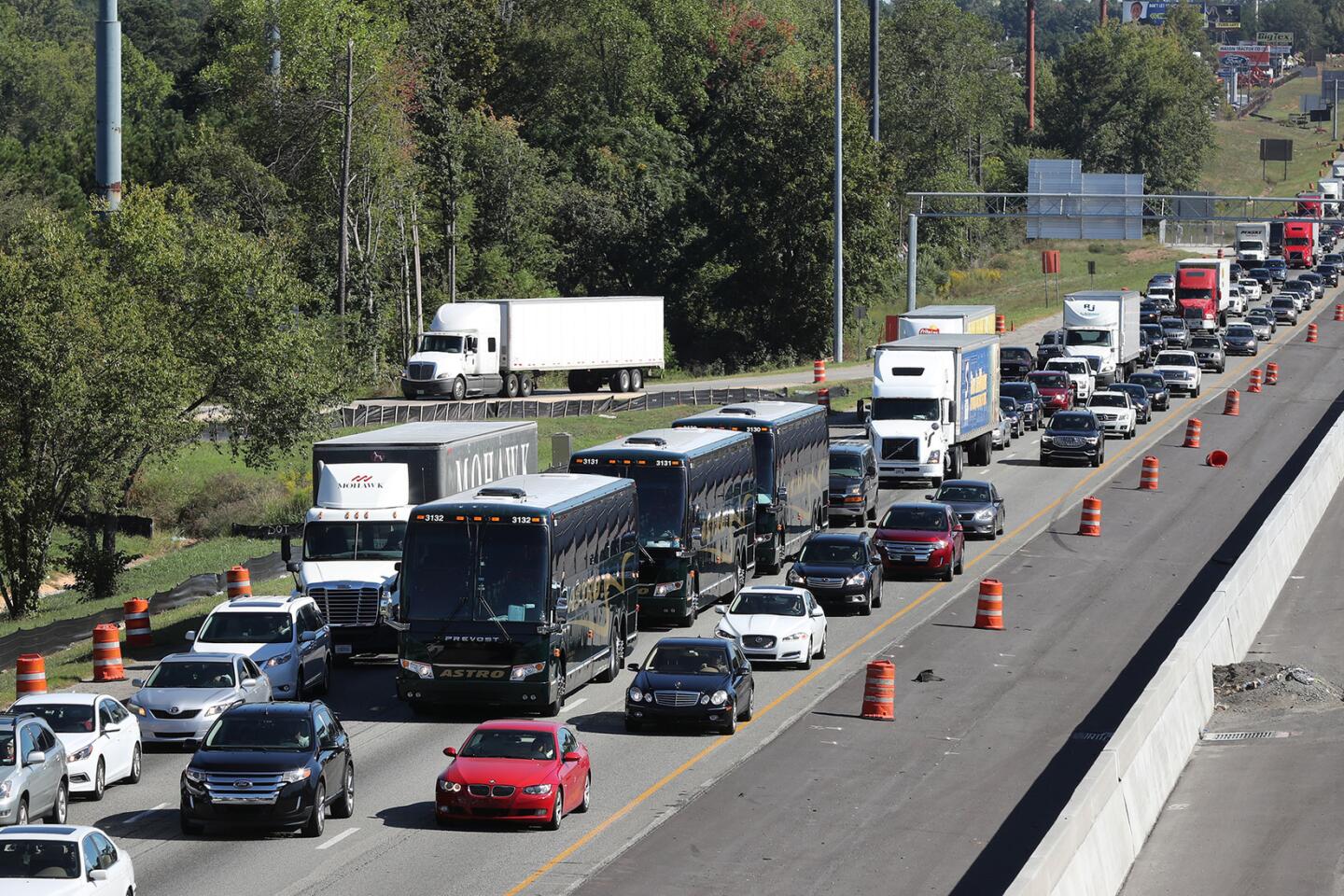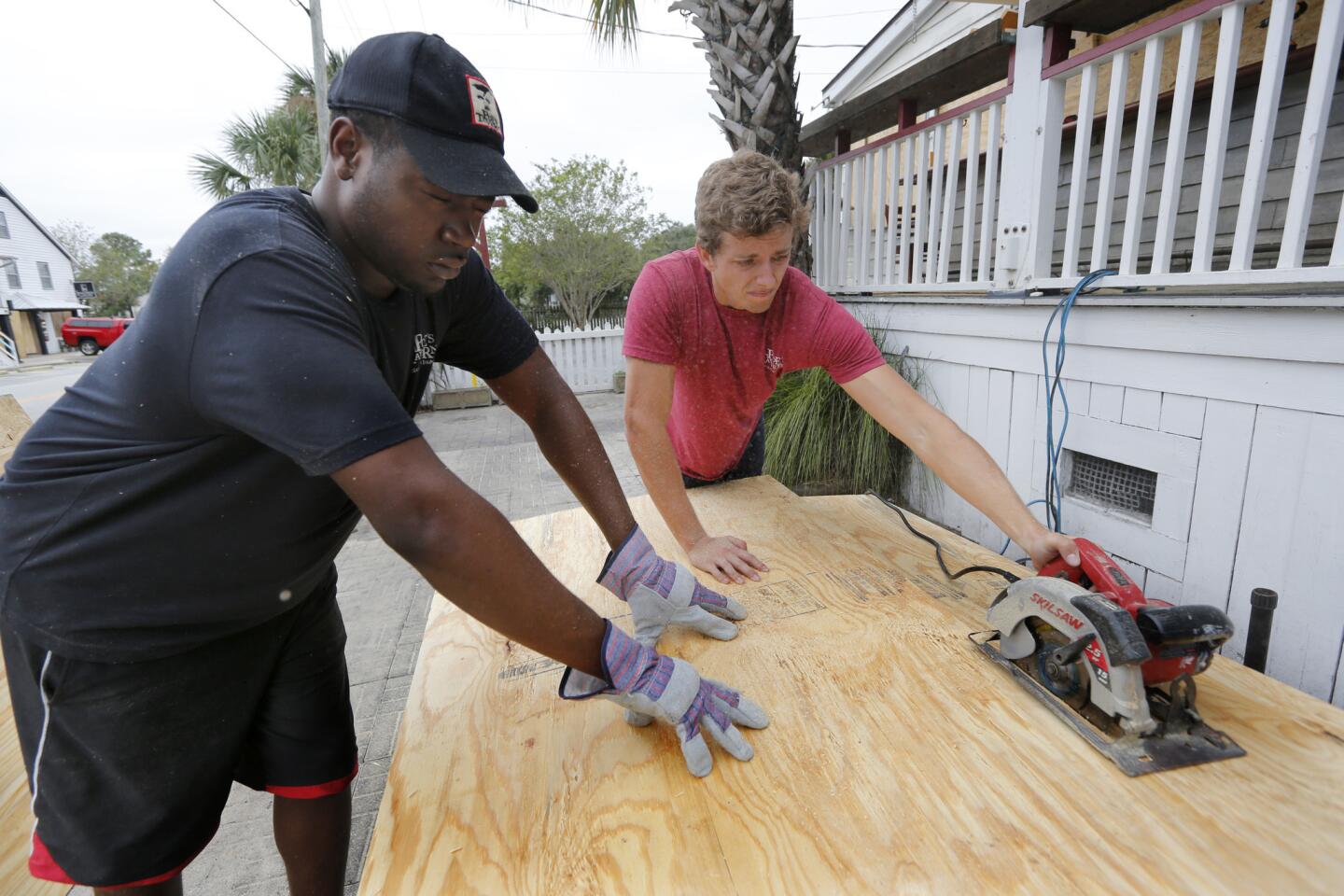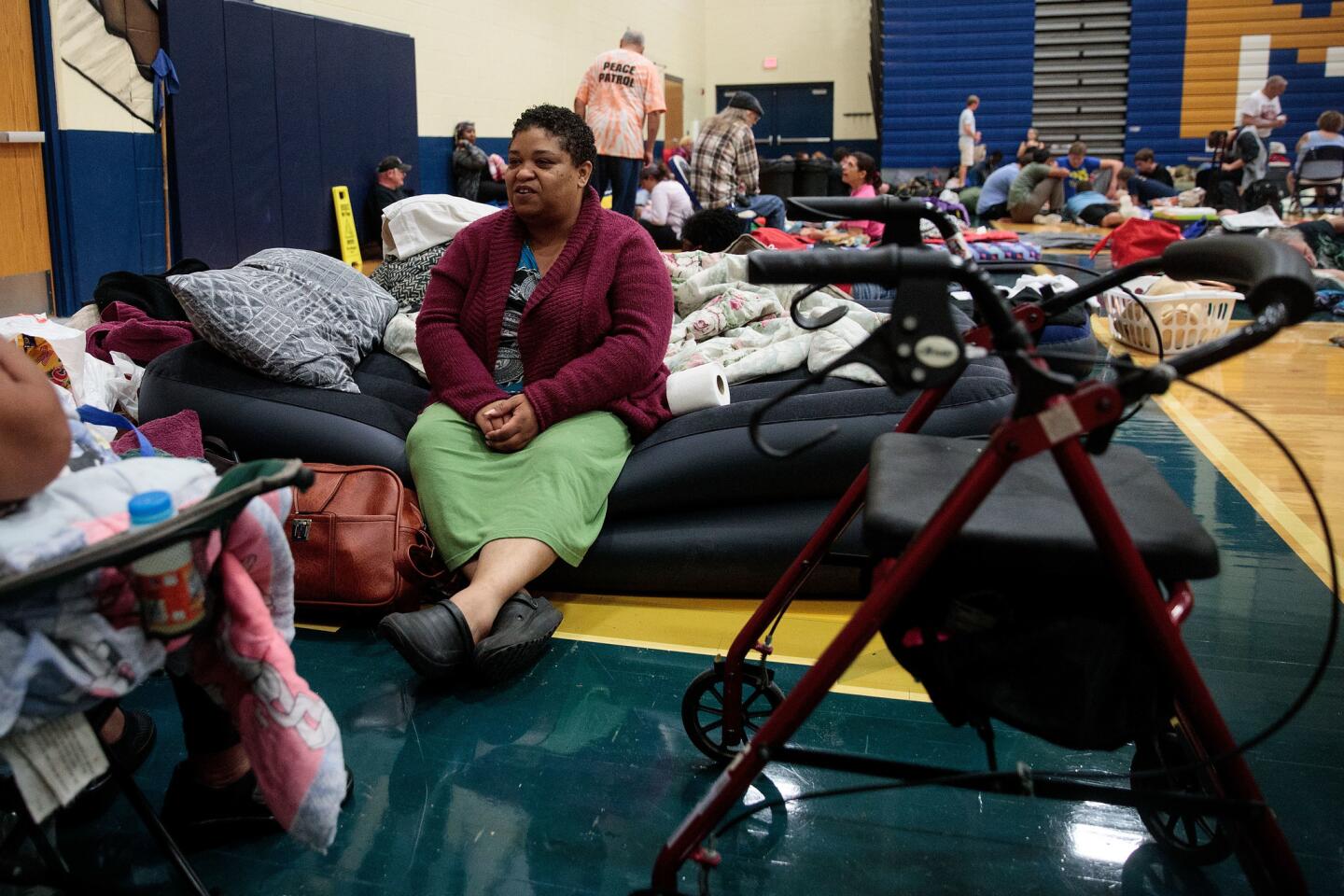Hurricane Matthew triggers fears of massive flooding in North Carolina; U.S. death toll hits 17
- Share via
Reporting from Pineview, N.C. — Towns across North Carolina ordered new evacuations Sunday as rising rivers threatened to flood a vast area, dwarfing the initial destruction left over the weekend by Hurricane Matthew.
Torrential rain battered the state on Sunday, leading to fears of massive flooding as the remnants of the storm — which has been downgraded to a post-tropical cyclone — continued to wreak havoc.
More than 120 miles from the coast, the city of Fayetteville experienced heavy flooding and remained under a curfew Sunday night. Four people who disappeared Saturday are presumed dead.
In the Neuse River Basin, officials in Kinston ordered evacuations. The river is expected to flood on Tuesday and by Friday swell to 30 feet — more than 2 feet above its maximum height following Hurricane Floyd in September 1999, when flooding in the basin destroyed entire towns.
On Sunday, the Cape Fear River north of Fayetteville reached 31 feet, 2 feet over its previous record, and the Lumbee River near Lumberton reached 24 feet, 4 feet over its record high. Both are expected to crest on Monday or Tuesday.
Officials said Matthew had caused at least 17 deaths in the United States, including seven in North Carolina. The storm caused hundreds of deaths in Haiti last week.
The North Carolina deaths involved drivers or their passengers who entered flooded roads, officials said.
Three North Carolina counties closed schools and government buildings until at least Wednesday.
The storm was expected to churn eastward off the coast of North Carolina and continue to weaken into Monday. But officials warned there are plenty of reasons to remain concerned.
The unofficial rainfall totals were staggering: 18 inches in Wilmington, 14 inches in Fayetteville and 8 inches in Raleigh, the Associated Press reported.
“We will not see the rivers peak possibly until Monday and Tuesday. Our models show very, very dangerous conditions as those rivers go over their edges,” Gov. Pat McCrory said Sunday morning. “This storm is not over for North Carolina.”
Rescue workers have made nearly 900 water rescues, McCrory said, including 200 people from Pinetops, N.C. Some people had clung to trees or the tops of buildings to escape the floodwaters.
Private energy companies and electric cooperatives reported about 750,000 outages statewide.
In South Carolina, Matthew smashed into the coast 40 miles northeast of Charleston, becoming the first storm to make landfall in that state since 2004.
Many coastal areas remained without power Sunday. Interstate 95, the East Coast’s main artery, was reopened Saturday after a brief closure, but gas stations and restaurants along the route remained shuttered.
Local officials requested that an evacuation order continue in four coastal and lowland South Carolina counties, including Beaufort, the county that encompasses Hilton Head.
In Hardeeville, cars filled with tourists in Hilton Head T-shirts cloistered around plastic-covered gas pumps, waiting for the pumps to turn back on.
Thomas Burly, 30, sat in the back of his white Ford pickup with three friends, all of them evacuees from the storm that struck their homes on Hilton Head Island.
When they had to flee, they first traveled to the mainland city of Asheville on Thursday. A room cost $100. By the next morning, the hotel was charging $340 for the same space.
Burly and his friends relocated to Atlanta, where they spent Friday night, and finally moved to Hardeeville on Saturday, the inland town where deputies from the Beaufort County Sheriff’s Office staffed a checkpoint and turned away everyone except first-responders.
“It could be days before we’re back,” said Burly, whose home appeared dry and whole in photos sent by a neighbor. “It’s a hurri-cation.”
In addition to the seven deaths in North Carolina, there were four reported in Florida, three in Georgia and one in South Carolina, the AP reported.
UPDATES:
6:40 p.m.: This article was updated with reporting on the threat of flooding and other details.
11:15 a.m.: This article was updated throughout with Times staff reporting.
This article was originally published at 8:50 a.m.
More to Read
Sign up for Essential California
The most important California stories and recommendations in your inbox every morning.
You may occasionally receive promotional content from the Los Angeles Times.
